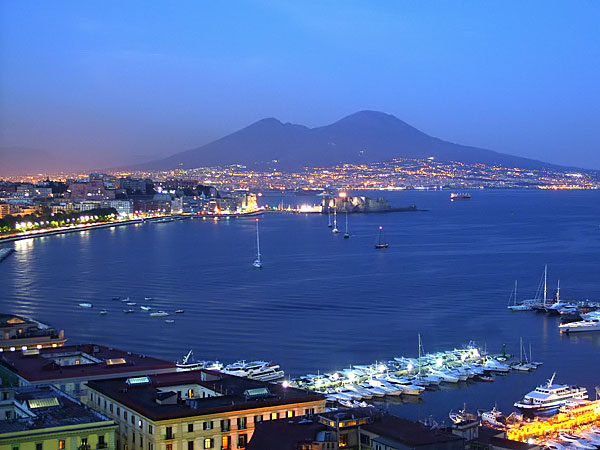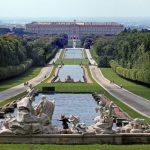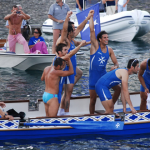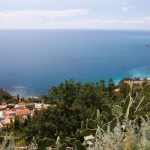
06 Apr 2011 Naples
The city of Naples is situated in the Gulf of the same name, between Vesuvius and the volcanic area of the Phlegraean Fields, in what has been called “one of the most celebrated and enchanting settings in the world “.This natural cove has attracted visitors ever since the first Greek settlers arrived on the island of Pithekusa (now called Ischia), subsequently founding the new city of Neapolis.
(now called Ischia), subsequently founding the new city of Neapolis.
The sumptuous hidden villas, the sheer drops down to the sea, the ridges that overhang the coast made these the most luxurious places for ancient Romans to holiday and enjoy themselves. In fact, the Romans gave the Neapolitan hill the name of Pausilypon (now called Posillipo), which means a “respite from worry”. At Posillipo it is also possible to admire the Crypta Neapolitana, which contains the Tomb of Virgil.
In 1442 the city became the political center of the Aragonese, remaining under Spanish rule for two centuries. From the XVIII century the Kingdom of Naples was occupied by the House of Bourbon which, in 1816 transformed it into the Kingdom of the Two Sicilies. The Bourbons alternated with the French in Naples (Naples was conquered twice by the Napoleonic army) until, in 1860, the Kingdom of the Two Sicilies was conquered by Garibaldi’s “Expedition of the Thousand” and annexed to the Kingdom of Italy.
Traces of all the various historical periods are embedded in Naples Old City Center which is divided in two by the “Spaccanapoli” street. This part of the city also includes the most beautiful Noble Palaces, unique examples of Renaissance architecture including the spectacular Cloisters and numerous medieval structures (such as the covered Market on Via Tribunali).
unique examples of Renaissance architecture including the spectacular Cloisters and numerous medieval structures (such as the covered Market on Via Tribunali).
Visiting Naples means, above all, “living” the city, coming into contact with the “color” of its culture and centuries-old traditions: the goldsmith’s art, the production of nativity scenes which is concentrated on Via S. Gregorio Armeno, master craftsmen who make lutes or produce objects made from wood and cast iron, the masterpieces created by the ceramists of Capodimonte.
Also worth visiting are the areas of Piazza Mercato, Via Medina and Piazza Municipio, Piazza Plebiscito and Santa Lucia, Pizzofalcone, Mergellina, del Vomero, dei Camaldoli and Capodimonte. A separate chapter should be dedicated to pizza which has its own festival in Naples: the Pizzafest, held in September at the Mostra d’Oltremare, featuring dozens of open air pizzerias.
Plebiscito and Santa Lucia, Pizzofalcone, Mergellina, del Vomero, dei Camaldoli and Capodimonte. A separate chapter should be dedicated to pizza which has its own festival in Naples: the Pizzafest, held in September at the Mostra d’Oltremare, featuring dozens of open air pizzerias.
Naples is surrounded by historic places of extraordinary importance, such as Vesuvius, Pompei, Herculaneum, the Phlegreaen Fields and the Sulfur Mines of Pozzuoli, and also offers spectacular Mediterranean cuisine.
Sorrento is definitely the best place from which to admire the view of the Gulf of Naples and Vesuvius, the historic volcano that destroyed Pompei on 24th August 79 A.D.
The Sorrento Peninsula is one of the most characteristic areas in the world due to the morphological features of the coastline which has been hollowed out of the tuff by the continual erosion of the sea water, as well as the fragrance of the lemons used to produce the Limoncello liqueur, for which the area is famous. Sorrento is also well-known for the production of oranges, walnuts, oil, liqueurs and wine, especially the Lacryma Christi.
From Sorrento it is possible to get a glimpse of the wonderful islands of Capri, Ischia and Procida










